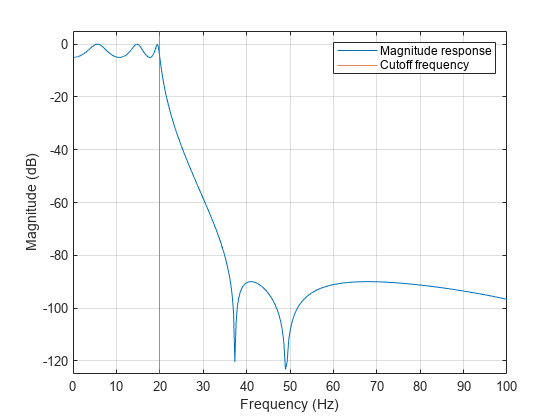bilinear
아날로그에서 디지털로의 필터 변환을 위한 쌍선형 변환 방법
구문
설명
이 함수를 사용하여 연속시간 전달 함수를 그에 상응하는 이산시간 전달 함수로 변환할 수 있습니다.
예제
입력 인수
출력 인수
알고리즘
참고 문헌
[1] Al-Saggaf, Ubaid M., and Gene F. Franklin. “Model Reduction via Balanced Realizations: An Extension and Frequency Weighting Techniques.” IEEE Transactions on Automatic Control 33, no. 7 (July 1988): 687–92. https://doi.org/10.1109/9.1280.
[2] Oppenheim, Alan V., and Ronald W. Schafer, with John R. Buck. Discrete-Time Signal Processing. Upper Saddle River, NJ: Prentice Hall, 1999.
[3] Parks, Thomas W., and C. Sidney Burrus. Digital Filter Design. New York: John Wiley & Sons, 1987.
[4] Tustin, Arnold. “A Method of Analysing the Behaviour of Linear Systems in Terms of Time Series.” Journal of the Institution of Electrical Engineers - Part IIA: Automatic Regulators and Servo Mechanisms 94, no. 1 (May 1947): 130–42. https://doi.org/10.1049/ji-2a.1947.0020.
확장 기능
버전 내역
R2006a 이전에 개발됨



